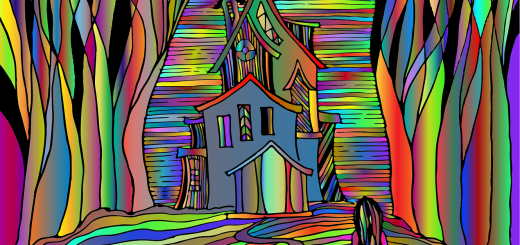When Did Spain Colonize Mexico?

Before diving in, please note: This post is for informational purposes only. If you’d like to know more about how we approach topics, feel free to check out our friendly Disclaimer Page.
Hey there, amazing readers! 🖐️ Just a quick note: yes, we know there are a lot of ads here. Trust us, we get it—it’s not the prettiest look, but they help us keep this blog alive and kicking. Those pesky little ads cover the costs of all the behind-the-scenes magic, from hosting and tech stuff to creating content we hope you’ll love.
We’re committed to delivering quality posts, and your support (even just sticking around despite the ads) means everything to us. So, bear with us, and thanks for helping us keep the good vibes rolling. Now, on to the fun stuff! 😉
TRANSLATE BUTTON AT THE END OF THE ARTICLE
The colonization of Mexico by Spain is one of the most significant events in world history, shaping not only the history of Mexico but also the broader landscape of the Americas.
The story of Spain’s colonization of Mexico spans several decades, and it all began with the arrival of Spanish explorers and the eventual conquest of the mighty Aztec Empire.
So, when did this pivotal event take place, and what led to it?
Let’s take a closer look at the timeline and key moments that marked the beginning of Spanish rule in Mexico.
The Arrival of Spanish Explorers
The first significant encounters between Spain and the region we now know as Mexico began in the early 16th century.
In 1519, the Spanish explorer Hernán Cortés arrived on the eastern coast of what is today Mexico, marking the beginning of Spain’s interest in the Americas.
Before Cortés, Spain had already sent explorers to the New World, such as Christopher Columbus (who landed in the Caribbean in 1492) and Juan de Grijalva (who explored the Mexican coast in 1518).
However, it was Cortés’s expedition that led to the eventual colonization of Mexico.
The Conquest of the Aztec Empire (1519–1521)
At the time of Cortés’s arrival, the Aztec Empire, one of the most powerful civilizations in the Americas, was flourishing in the region that is now Mexico.
The Aztecs, led by their emperor Moctezuma II, controlled much of modern-day Mexico and had a sophisticated society with impressive architecture, a rich culture, and an advanced knowledge of astronomy and mathematics.
Cortés and his small army of conquistadors, aided by indigenous groups who were enemies of the Aztecs, set out to challenge the Aztec Empire.
After several months of political maneuvering, alliances, and battles, Cortés and his forces captured Moctezuma and laid siege to the Aztec capital of Tenochtitlán (modern-day Mexico City).
This culminated in the fall of the city in 1521 after months of conflict, disease, and internal strife.
The fall of Tenochtitlán marked the end of the Aztec Empire and the beginning of Spanish dominance in the region.
The Establishment of New Spain
Following the conquest of the Aztecs, the Spanish established control over the region and began the process of colonization.
In 1521, the Viceroyalty of New Spain was officially founded.
This marked the formal beginning of Spanish colonial rule in what is now Mexico.
New Spain became a key part of Spain’s vast colonial empire, with Mexico serving as a central hub for the extraction of valuable resources such as gold and silver, which fueled Spain’s wealth during the 16th and 17th centuries.
Spanish settlers established towns, churches, and agricultural systems, while Spanish missionaries worked to convert indigenous populations to Christianity.
The Role of Indigenous People and Cultural Transformation
The colonization of Mexico was not just a military conquest; it also involved significant cultural, social, and religious changes.
The Spanish introduced European customs, language, and religion, dramatically transforming the indigenous societies in Mexico.
The Spanish also introduced new crops, animals, and technologies, which blended with local practices to create what we now recognize as Mexican culture.
However, Spanish colonization also led to the exploitation, forced labor, and severe depopulation of many indigenous communities due to disease, war, and harsh working conditions.
The native population suffered greatly under Spanish rule, with millions dying from European diseases such as smallpox, measles, and influenza.
The Lasting Legacy of Spanish Colonization
Spain ruled Mexico for nearly 300 years, during which the country underwent significant economic, political, and cultural changes.
The colonial period left an indelible mark on Mexican society, shaping everything from language (Spanish is the dominant language in Mexico today) to religion (Roman Catholicism remains the predominant faith).
The Spanish influence also left its mark on Mexico’s architecture, cuisine, and art, all of which have evolved into unique elements of modern Mexican identity.
Conclusion: A Turning Point in History
In summary, Spain began its colonization of Mexico in 1519, with the arrival of Hernán Cortés.
After conquering the Aztec Empire in 1521, Spain established its colonial rule over the region, marking the beginning of nearly three centuries of Spanish control.
The consequences of this colonization were far-reaching, shaping the history, culture, and identity of Mexico in profound ways that still resonate today.

The Enlightenment Journey is a remarkable collection of writings authored by a distinguished group of experts in the fields of spirituality, new age, and esoteric knowledge.
This anthology features a diverse assembly of well-experienced authors who bring their profound insights and credible perspectives to the forefront.
Each contributor possesses a wealth of knowledge and wisdom, making them authorities in their respective domains.
Together, they offer readers a transformative journey into the realms of spiritual growth, self-discovery, and esoteric enlightenment.
The Enlightenment Journey is a testament to the collective expertise of these luminaries, providing readers with a rich tapestry of ideas and information to illuminate their spiritual path.
Our Diverse Expertise 🌟
While our primary focus is on spirituality and esotericism, we are equally passionate about exploring a wide range of other topics and niches 🌍📚. Our experienced team is dedicated to delivering high-quality, informative content across various subjects ✨.
To ensure we provide the most accurate and valuable insights, we collaborate with trusted experts in their respective domains 🧑🏫👩🏫. This allows us to offer well-rounded perspectives and knowledge to our readers.
Our blog originally focused on spirituality and metaphysics, but we’ve since expanded to cover a wide range of niches. Don’t worry—we continue to publish a lot of articles on spirituality! Frequently visit our blog to explore our diverse content and stay tuned for more insightful reads.





